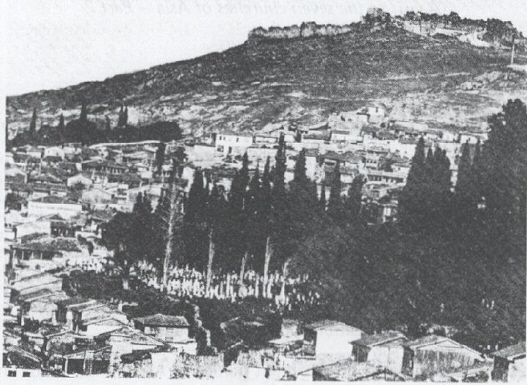Journey by Lamplight A visit to the seven churches of Asia — Part 2 -- By: Paul W. Wallace
Journal: Bible and Spade (First Run)
Volume: BSP 05:2 (Spring 1976)
Article: Journey by Lamplight A visit to the seven churches of Asia — Part 2
Author: Paul W. Wallace
BSP 5:2 (Spring 1976) p. 33
Journey by Lamplight
A visit to the seven churches of Asia — Part 2
[Paul W. Wallace, Ph.D., is Assistant Professor of Greek Archaeology at the State University of New York at Albany and Associate Editor of Bible and Spade. In addition to his teaching and editorial experience, Dr. Wallace has traveled widely in Turkey, giving him a personal knowledge of the sites he is describing in this series of articles. He has also excavated at several sites in Greece and has authored a number of articles in the field of classics in various scholarly publications.]
Smyrna—A Wealthy City
And to the angel of the church in Smyrna write: “The words of the first and the last, who died and came to life.
“I know your tribulation and your poverty (but you are rich) and the slander of those who say that they are Jews and are not, but are a synagogue of Satan. Do not fear what you are about to suffer. Behold, the devil is about to throw some of you into prison, that you may be tested, and for ten days you will have tribulation. Be faithful unto death, and I will give you the crown of life. He who has an ear, let him hear what the Spirit says to the churches. He who conquers shall not be hurt by the second death .” (Rev. 2:8–11)
Location and Historical Sketch
Smyrna is situated on the finest harbor in Asia Minor. Chios and the long promontory of the mainland which form the northern limits of the Gulf of Ephesus form at the same time the southern limits of the Gulf of Smyrna, or the Hermaeum Gulf. The Gulf of Smyrna is L-shaped and is entered from the north, from the direction of Lesbos. The entrance to the gulf is formed by the Melaena Promontory on the west, and on the east by a projection of land where the ancient city Phocaea stood. From Smyrna there was access to the Hermus River valley by which one could reach most of
BSP 5:2 (Spring 1976) p. 34
interior Lydia. Though Smyrna’s Gulf was superior to Ephesus’s, it looked to the northwest; ships from the south would therefore more likely choose to put in at Ephesus, and so avoid the trip around Chios and Melaena Promontory. But everything coming from the Black Sea or the northern Aegean is almost by nature funneled into the Gulf of Smyrna.
The modern city of Izmir lies below the hill known in antiquity as

View from a house top towards Mt. Pagus, the acropolis of ancient Smyrna.
Mt. Pagus, the acropolis of the ancient city. North and northeast of the city rises Mt. Sipylus (now Manisaday), associated with some of the ...
Click here to subscribe
